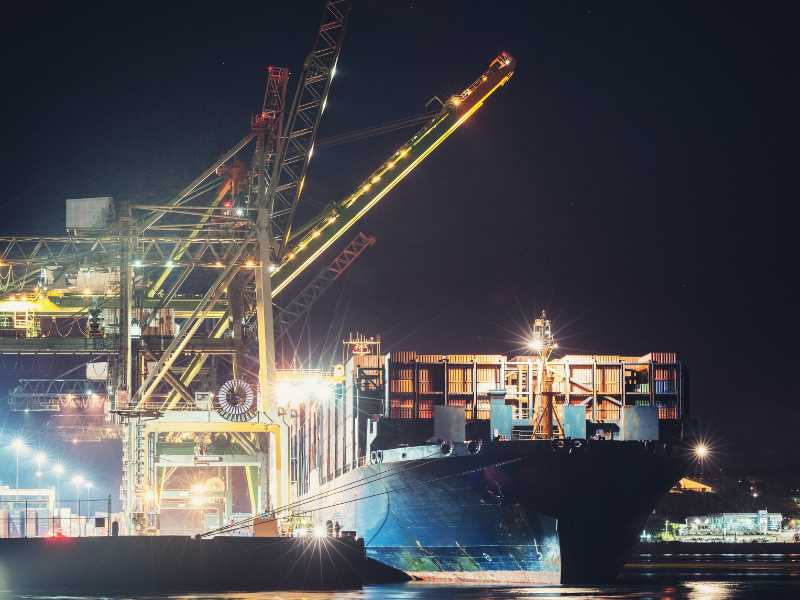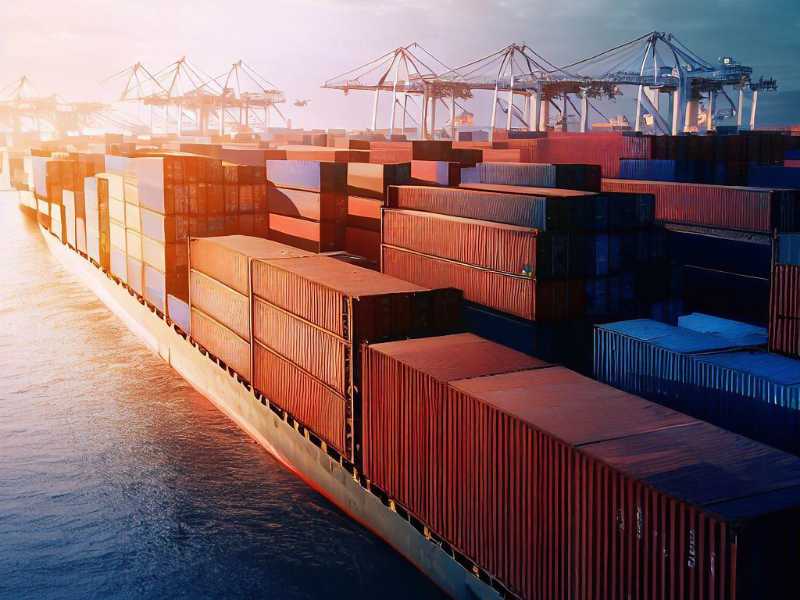Shipping items internationally via ocean freight is by far the most common practice. About 90 percent of the world’s global trade is carried out by ships. The fact that it’s widely adopted, however, doesn’t mean everyone uses it or even understands it.
If you’re considering how to get your products from Point A in one country to Point B (or C or D…) in another, continue reading to learn about how ocean transportation might make sense for your business.
What Does Ocean Freight Mean?
Large containers are used to transport ocean cargo by ship. Ocean freight – or sea freight – is the cheapest means of transporting cargo, but it’s also the slowest. Transport by water includes not only the open ocean, but also rivers, canals, and lakes that lie inland or between the coasts.
Additional forms of transportation are often used alongside ocean freight, for ground (or air) transportation in the country of origin and the final destination. Goods are loaded onto trucks and transported to waiting ships at the port of origin before being transported across the ocean to the importer at the port of destination via ocean freight shipping. Pickup and delivery by truck are options (port-to-door), along with the more traditional port-to-port and door-to-port routes.
Types of Ocean Freight Shipping
One common method of transporting goods by sea is via container. This is mainly because of how secure it is and how simple it is to work with. Shipping containers are designed to be easily relocated without damaging the contents inside. However, they work best with dry or prepackaged goods and have limited applicability beyond those categories. There are two types of container shipping terms that you will hear as you look into this option:
LCL Shipping: When a single shipper does not have enough cargo to fill an entire container, they can opt for LCL (Less-than-Container Load) shipping. As a result, orders and/or other shippers share empty space in the container to maximize container utilization. The benefit to the buyer is that they will only be charged for the actual amount of space they occupy. Because of this, even smaller companies can take advantage of the low cost of ocean shipping.
FCL Shipping: When a container is labeled as FCL (Full Container Load), it means that all of the items inside came from a single supplier. This is a more cost-efficient option than paying by the square foot because you pay one price for the entire container. Your shipment is less likely to be damaged because it is not mixed in with other items.
3 Types of Ocean Transport Service Providers
There are three main types of ocean transport service providers:
- Shipowners and operators of steamships are referred to as Vessel Operating Common Carriers (VOCCs).
- An Ocean freight forwarder is a broker that coordinates the shipment of goods on behalf of the owner.
- Carriers who act in the capacity of carriers but do not own or operate their own vessels are known as non-vessel operating common carriers (NVOCCs).
What Are Ocean Freight Charges?
How much money you’ll spend on shipping your freight by sea will be determined by the specific services you require. It also depends on specific factors, like:
- Container size
- Transportation time
- Cargo type
- Cargo weight
- Cargo dimension
The various containers used to transport ocean freight have slightly different requirements. There are a variety of sea freight container sizes available, and you should choose one that is most appropriate for the cargo you will be transporting based on its size, shape, and volume.
In addition to the standard 20-foot, 40-foot, and 40-foot high cube shipping containers, you can also choose from open tops and flat racks when shipping ocean freight.
Is Ocean or Air Freight Cheaper?


In general, ocean freight is typically considered to be cheaper than air freight — but as with everything, that comes with a few outliers and unique situations. Typically, you should consider exactly what you need, including timelines, size of shipment, and specific inventory to be shipped.
The speed of air delivery is usually the deciding factor when selecting a shipping method. When compared to ocean shipping, the time it takes to transport cargo via airplane is much shorter. Shipping by air freight can take just a few days while shipping by sea freight can take two weeks or more. This timeline is especially helpful to know when sending perishable goods. The trade-off for quicker service is typically higher transportation costs. What makes sense for your shipping strategy is something you must decide.
So, which one should you pick? Think about how each shipping option will affect your business’s priorities, how much it will cost, and how quickly you need the goods delivered.
If the shipment has a firm, impending arrival date and the funds are available, air shipping is the way to go. Ship via ocean if you can be more flexible with your arrival date and if you want to save money.
Comparing Ocean & Air Transport
Ocean freight rates allow for greater volume to be shipped at a much more cost-effective rate than air freight. There are fewer regulations on shipping hazardous materials via sea freight as compared to air freight. When comparing air and sea freight, air freight emits more than 10 times as much carbon dioxide as sea freight, so if sustainability is important, this is another factor to consider.
Challenges With Ocean Transportation
Shipping times are increased because of the use of ocean freight as opposed to air freight, which is typically five to six times faster. Compared to other modes of transport, ocean cargo is more susceptible to unforeseen events during transit, such as bad weather, customs holdups, and port congestion.
This can lengthen the delivery time by several days or weeks. Shipping by ocean leaves goods more vulnerable to damage because of the longer transit time. There are more opportunities for damage or loss to occur with ocean freight due to the many hands that touch the cargo along the way.
AMS Fulfillment Helps You Find Ocean Transport


If you need to ship large, cumbersome items or need to ship at the lowest possible cost, ocean freight is the best option to consider. When you need to ship a lot of packages at once, ocean freight is also your best bet.
Getting your inventory across the ocean is easy with AMS Fulfillment. Our teams have the experience and knowledge to help you find the right ocean freight services, fill a container for FCL shipping or partner with other companies for LCL shipping, and take advantage of the discounts and savings you can find with ocean freight.
When you need to get your inventory from its country of manufacture to our warehouses to be ready for your customers, we can make sure you have everything you need for customs, transportation, and storage. Contact Us today to see how we can help your ocean freight needs.





